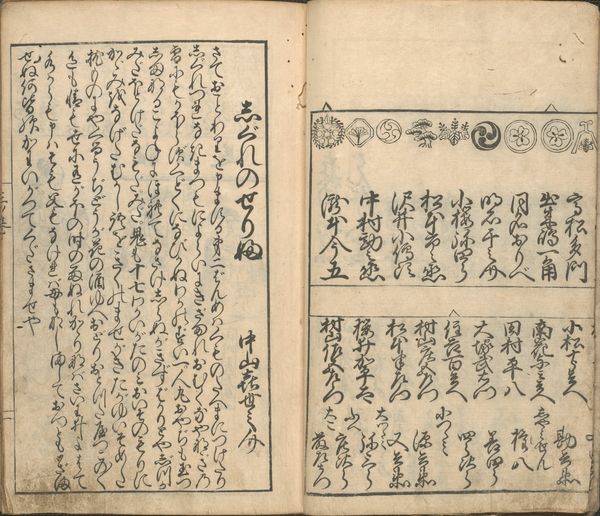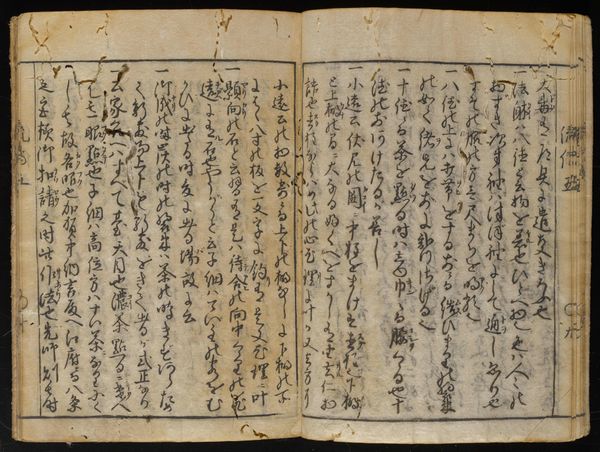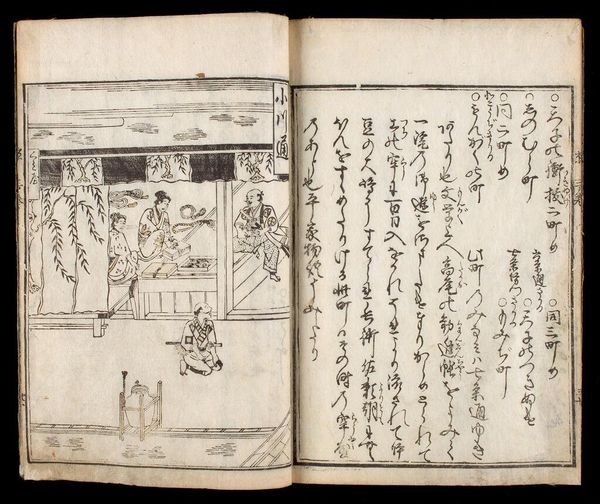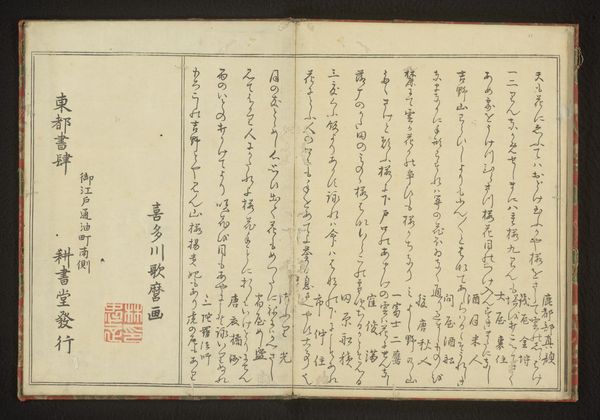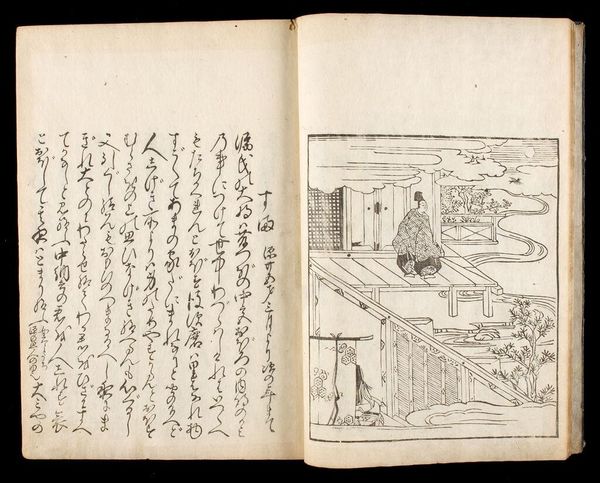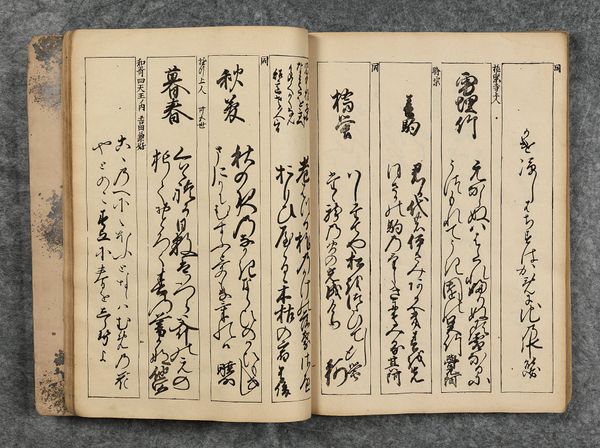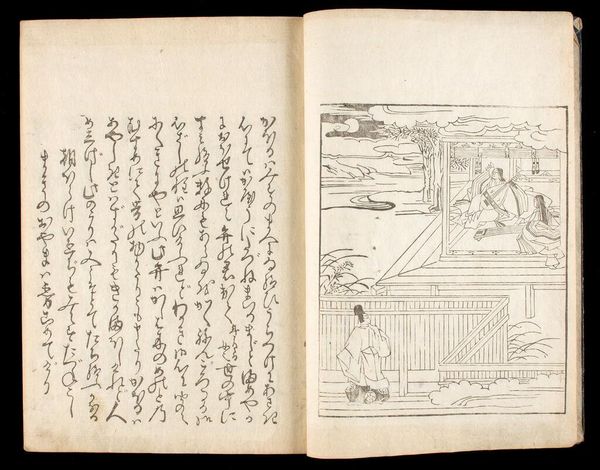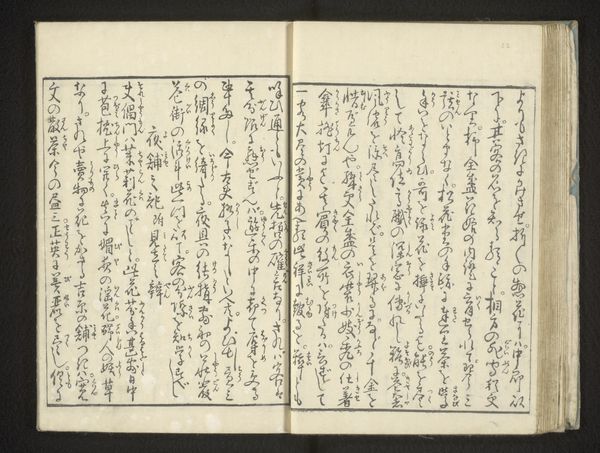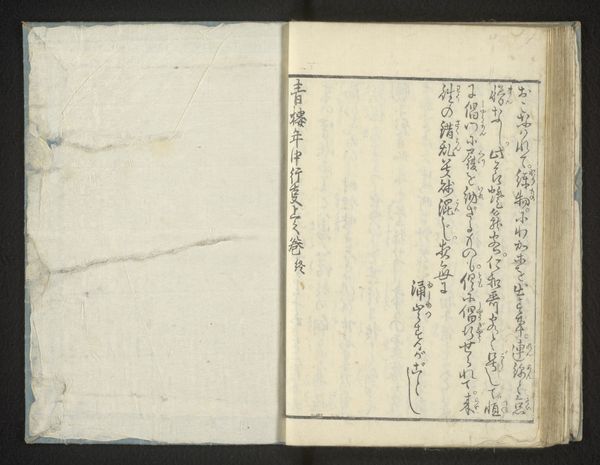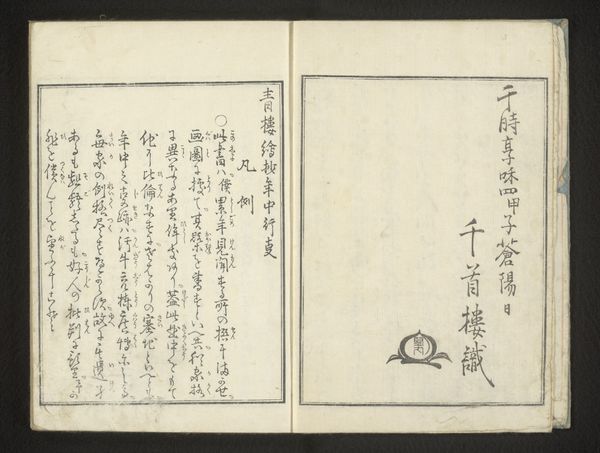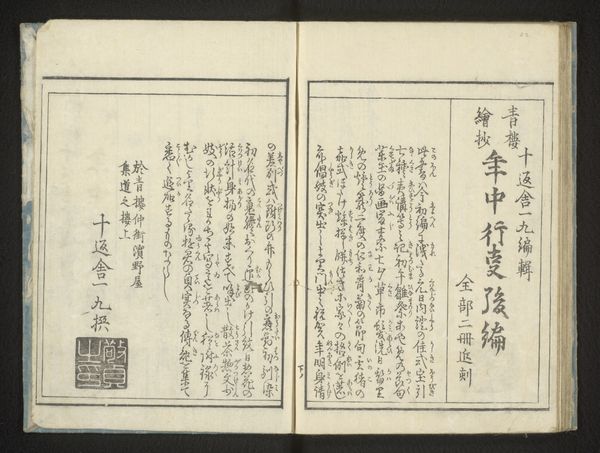
drawing, paper, ink, pen
#
drawing
#
aged paper
#
book
#
asian-art
#
sketch book
#
japan
#
paper
#
ink
#
pen-ink sketch
#
pen work
#
pen
#
calligraphy
Dimensions: 8 11/16 × 6 5/16 × 3/8 in. (22.07 × 16.03 × 0.95 cm)8 7/8 × 6 3/4 × 2 1/16 in. (22.54 × 17.15 × 5.24 cm) (all volumes with case)
Copyright: Public Domain
This illustrated book, *Promulgation of the Contemporary Tea Ceremony,* was made by Endō Genkan in Japan sometime between 1656 and 1702. It offers us a fascinating glimpse into the transformation of the tea ceremony from an elite ritual to a more widespread cultural practice. The illustrations, combined with meticulous handwritten notes, act as a guide to the proper construction of tea houses and the use of tea implements, and it allows us to imagine a growing interest in tea culture among different social classes. Endō Genkan’s book reflects the changing social dynamics of the Edo period. It demonstrates a desire to codify and disseminate knowledge about tea ceremonies. To fully understand this artwork, one might research the Edo period's socio-economic shifts and the evolving role of merchant classes in cultural practices. The meticulous details in the book indicate the desire to regulate, standardize, and, perhaps democratize tea culture. It is a great example of the role of social history in interpreting art objects.
Comments
minneapolisinstituteofart almost 2 years ago
⋮
Contemporary guide to tea ceremony, Enshū school. In the mid-1600s, an aristocrat named Kobori Enshū (1579–1647), who was also a skilled poet, artist, flower arranger, and tea master, developed his own style of the tea ceremony based on the aesthetic ideal of kirei-sabi, which combined the notions of refined beauty (kirei) and patina, the wear associated with age (sabi). Enshū’s kirei-sabi style, which partially supplanted wabi (imperfect or rustic) as the dominant aesthetic, had a great impact on the design of gardens and teahouses, decoration of teahouse interiors, and the production of tea wares in the mid-1600s. Two generations later, Endō Genkan, an adherent of the Enshū School of tea, wrote a number of important books on the Japanese tea ceremony including the volumes displayed here, which sought to disseminate Enshū’s kirei-sabi tea aesthetic.
Join the conversation
Join millions of artists and users on Artera today and experience the ultimate creative platform.

